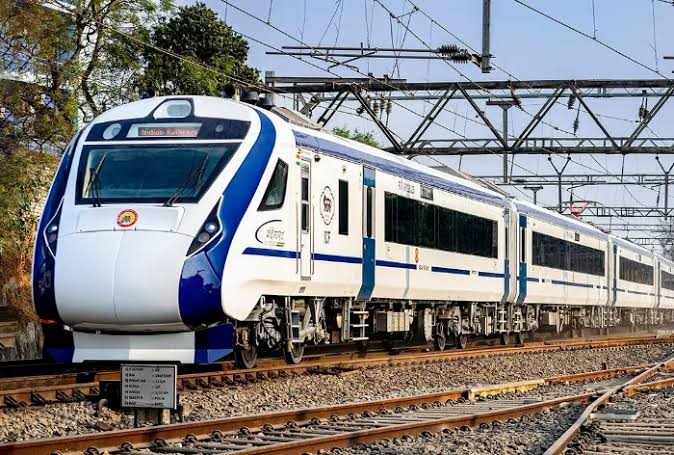Bharat has a totally changed rail canvass

In the last year alone, India built a 5,300 km rail network, equal to Switzerland’s entire train network
While addressing the Viksit Bharat Ambassador event in Mumbai, Shri Ashwini Vaishnaw, the Union Minister for Railwas gave a detailed account of how the Railways, seen and treated as ‘milch cow’ in previous regimes witnessed all-round development under the Modi government.
The Union Minister for Railways, Communications and IT reeled out data to showcase transformative changes in the Indian Railways in the past 10 years of NDA government while also highlighting its neglect during Congress-led regimes.
The Railways have added a huge tranche of networks and undergone wide-scale electrification and modernisation, so much so, that the developed economies are finding it tough to match steps with India.
“Today, a 4 km rail track per day is being built in the country. In the last financial year alone, we built a 5,300 km rail network, which is equal to Switzerland’s entire train network. In the past 10 years, 31,000 km railway track was added, which is equal to Germany’s entire network,” said the Union Minister.
Giving a low-down on the electrification and modernisation of Railways under the Modi government, Mr Vaishnaw said that 44,000 km of railway networks were electrified in the past 10 years, as compared to 20,000 km in the past 60 years of Congress governance.
“Today, we are heading towards 100 per cent electrification in the Indian Railways,” he added.
The Railways despite being the biggest public carrier remained in despair for such a long time because of the previous government’s neglect and ignorance.
“Conversion from Meter gauge to broad gauge networks should have been initiated during 1950-60s but that was taken up during NDA government,” he said.
The Minister also elaborated on the renovation of railway stations and the manufacturing of home-grown modern trains under the Modi government.
Redevelopment of more than 300 railway stations across the country is under progress, with 120 stations alone in Maharashtra. Shivaji Maharaj railway station is one such state-of-the-art model. Vande Bharat and Bullet trains are the realisation of the government’s consistent and committed focus on developing Railways as one of the key growth engines of the country.
The Bullet trains connecting eight cities along the way between Maharashtra and Gujarat will bring unprecedented development in the region while the homegrown Vande Bharat trains will re-write the way the countrymen commute and travel.
“Modi government has made a sincere effort to indigenously develop Vande Bharat trains, rather than importing the modern units from developed economies,” he said.
Stating that Vande Metro is included in the first 100-day program of the Modi government’s third term, he elaborated that the next few years will see transformational change after the roll-out of the Vande Bharat series.
“Vande Metro (connecting two cities), Vande Chair car (covering cities within 500 km distance) and Vande Sleeper (connecting cities over 500 km) will enhance comfortable travel while waiting tickets will be completely done away with,” said the Union Minister.
India is set to emerge as a global hub in semiconductor manufacturing and telecom services and will see generational change in years to come. Highlighting the tectonic shift in mobile manufacturing, the Minister informed, “10 years ago, 98 per cent of mobile phones were imported, today 99 per cent of mobile phones are Made in India.
He added that mobile manufacturing remained non-existent during previous regimes, today India is emerging as a global hub of mobile manufacturing and export.
“Apple exported phones worth 8,500 crore in April alone and is slated to grow exponentially in years to come,” he informed.
The Union Minister, citing an example of a girl from Bihar said that today youngsters are re-writing the growth story of India.
“I recently met a girl from a remote location in Bihar who worked at a mobile manufacturing unit and ran complex machines. When I asked how she felt about this, she told him that she was getting more recognition and respect than her village Pradhans enjoyed,” he added.



